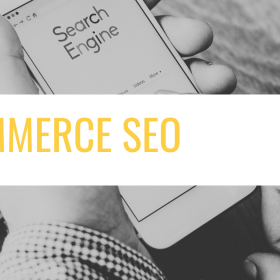Branding is the foundation of any successful business.
It’s what allows companies worldwide to sell cheap products for thousands of dollars. It’s what differentiates iPhones from other smartphones.
The truth is, there’s much more your customers will take into account than just your products before buying from your business.
They may choose you because of your unique mission. They may want to buy your products for the relationship they have with your brand.
Think of it this way: branding is the set of perceptions your public has of your company.
It represents your unique identity.
It deals with your message, values, and purpose.
When these factors align with your customers’ own values and interests, the results are quite often the same: lots of clients coming in, higher sales, and an overall increased revenue.
So, not only building strong branding will help you establish credibility and trust – it will allow you to turn people who may not even know you into loyal, returning clients.
And it doesn’t end here.
It’s much cheaper for brands nowadays to sell again to their previous customers than to acquire new clients – thus meaning branding can even help you save money.
All of these reasons make investing in building a solid branding campaign crucial for businesses in today’s fast-paced world.

But how do you make sure your branding campaign is successful?
Let’s go over the best practices your brand should follow to create a branding campaign that brings in loyal customers, increase sales, and – most importantly – lasts over time.
5 best practices to create a successful branding campaign
Building a successful branding campaign takes more than just a pretty logo or a catchy tagline.
Let’s dive into the 5 best practices your brand needs to follow for creating a successful branding campaign:
- The foundation of branding: market research
Every successful branding campaign begins with market research.
It’s simply unavoidable: you can’t build a long-lasting brand strategy if you don’t know your audience deeply.
Every single aspect of your branding campaign has to align with what your audience wants and cares about.
Surely, creating a bunch of customer personas is a great start, but it’s important you dig deeper into your audience’s behavior, habits, and preferences.
What are the deeper problems of your customers?
What are their desires, their everyday struggles, and hitches?
And, most importantly
How will your products or services help with them?
It’s essential you deeply understand your target audience’s needs, wants, fears, and pains.
Without proper market research, you risk creating a branding campaign that misses the mark.
By gathering this information, you can tailor your branding campaign to effectively reach your target audience, engage it, and eventually turn it into a community of loyal customers.

- The belief system: will your customers accept what you want to say?
A belief system is the foundation of any successful branding campaign.
This crucial yet overlook concept refers to the shared beliefs and values between your brand and your audience.
It consists of the junction where what your customers believe meets the principles your brand aims to communicate.
But why is building a belief system crucial for creating a successful branding campaign?
Well, this deals with two main reasons.
First, your public won’t buy products from a brand that goes against their principles – whether they do it consciously, or nonconsciously.
For instance, think of it on a practical side.
Would someone who deeply cares about the environment buy from a non-sustainable fashion brand?
Or again, do you think a slow food enthusiast will ever be interested in eating at McDonald’s?
On top of that, beliefs are the secret ingredient that can turn one-time buyers into loyal, returning clients.
When your customers share your brand’s beliefs, they’re more likely to identify with it.
And when they do, chances are they will come back again because of the pride they feel in associating with your brand.
The most popular example of this is Patagonia, the fashion brand known for its commitment to the environment and sustainability.
Patagonia does not just have customers – it has advocates.
Ultimately, building a strong belief system will help you get more than just customers, but a true army of people willing to come back multiple times, and even spread the word about your brand.
- Share valuable content
Every piece of content your brand shares should provide your audience with value.
Blogs or social media posts just yelling “try our new products” are a relic of an old-business era, and they won’t allow you to build a long-term brand strategy.
Your branding campaign should add value to your target audience, therefore giving them a reason to truly care about your message.
Whether it’s through blog posts, videos, or social media posts, your content should provide insight and solutions to the problems and desires of your public.
It’s only through sharing valuable content that you can establish your brand as a trusted resource and build a loyal following of people ready to buy from your business multiple times.
- Choose your channels
Each social media platform has a different target audience and tone.
When choosing your channels, it’s essential you consider where your customers spend their time online, and why they do it.
To do so, you can divide social media platforms into two different categories, according to their scope:
- Content discovery platforms are used by people for entertainment, inspiration, and creativity.
They generally include Instagram, Facebook, LinkedIn, and Twitter. - Content consumption platforms are chosen by people willing to get learn deeper about specific topics.
They mostly consist of blogs and podcasts.

Rather than spreading your resources too thin across multiple channels, it’s more effective to focus on a few places where your target audience is most active.
A good practice is to mix a content discovery platform with a content consumption channel, like managing an Instagram page together with a company blog.
This will allow you to tailor your content according to your public, and ensure the messaging of your branding campaign reach them effectively.
- Spread the word
Getting the word out about your brand and building awareness is crucial for any successful branding campaign.
Remember: even the best content won’t do you any good if nobody is listening.
So, make sure the people you want to reach are actually out there hearing your message.
You can do it by building a first heap of awareness with practices like guest posting and sponsored content.
Guest posting on other industry-related blogs and websites will allow you to tap into their audience and reach a new, targeted audience.
Sponsored content can help showcase your brand’s expertise and thought leadership, further establishing your brand as a trusted resource.
Ultimately, make sure you’re spreading the word and getting your branding campaign in front of your public, otherwise all your efforts will result in wasted time and resources.
Save money and time on your branding campaign with reliable strategies
Building a successful branding campaign comes with high risks.
A bad-structured branding campaign can lead your business to lose money, waste time, or – even worse – harm its reputation.
For sure, building a branding campaign can have many benefits…
But what are the consequences of doing it wrong?
If you want to limit the risks of permanently damaging your business, then you should strive to apply the best strategies on the market and use reliable means to sustain your efforts.
…and that’s exactly why many businesses use Getfluence every day for their branding campaigns.
Getfluence is the global marketplace that helps your brand establish itself as a trusted authority in its market, thanks to partnerships with over 10.000+ premium publishers from all around the world, like Forbes and The Economist.
With Getfluence, you can get in touch with the most renowned website in your area of expertise to share content that associates with your values and boost your branding efforts.
But it doesn’t end here.
Thanks to its user-friendly interface, Getfluence helps you save on average 70% of the time you spend on your branding campaigns.
Finally, you will save money due to the competitive rates that Getfluence has pre-negotiated for you with all of its partners, so you don’t have to worry about unfair or hyperinflated prices.
If you’re looking to attract a targeted audience to your brand in a long-lasting and effective way, then Getfluence is the solution you’re looking for.
Ready to build your next successful branding campaign?
Create an effective branding campaign with Getfluence now.
Most asked questions about how to create a successful branding campaign
What should a branding campaign include?
While every branding campaign is unique on its own, there are some key elements each of them should include.
Your branding campaign shall take into account well-researched market analysis, the creation of valuable content, and some means to create brand awareness.
How do you structure a brand campaign?
To structure a branding campaign, you should organize your moves consequentially, starting with market research.
You should use the insights you gather about your audience to create a unique identity, and proceed with picking the best channels and formats to spread your message.
How do you start a successful brand campaign?
Every successful branding campaign starts with market research – you can’t create a long-lasting strategy without a deep study of your public. Make sure you dive into your audience’s needs, desires, and problems, and create a message that aligns with them.





